 Anyone who follows this blog and/or my musical (mis)adventures (and bothers to remember any of it all) may recall that back in January I recorded a 21-minute prog rock suite called 66. If you don’t remember, it’s available in its entirety, both as 10 individual tracks and the complete suite, on my music site.
Anyone who follows this blog and/or my musical (mis)adventures (and bothers to remember any of it all) may recall that back in January I recorded a 21-minute prog rock suite called 66. If you don’t remember, it’s available in its entirety, both as 10 individual tracks and the complete suite, on my music site.
As usual, I’ve spent a ton of time listening to 66 since I recorded it. If my iTunes play count is to be believed, it’s somewhere in the range of 130 times, but I suspect it’s actually much higher than that, with different versions (the 24-bit version, the 16-bit CD version, the MP3 version), some of which I no longer keep on my computer, plus listening in the car and elsewhere that may not have been logged. The point is, I’ve literally spent days listening to this thing since I recorded it 6 months ago. And, not surprisingly, I eventually started to notice things I was unhappy with.
The most significant issue I had was with the drum sound. I don’t really play drums. (Well, OK, I do play drums, but I don’t really play drums.) The drum tracks are MIDI software instruments, part of GarageBand. I played the drum parts on my keyboard, looped them, tinkered with them endlessly in the track editor, and eventually arrived at an end result. But there were two problems: 1) they were too repetitive, and 2) they sounded plastic. The issues went beyond the drums, but they were my main source of frustration with what I had created.
I’ve been considering putting together a 3-track prog rock album this year called 3, in the format of the Yes albums Close to the Edge and Relayer. That would be one “side-long” track, followed by two “half-side” tracks. In other words, the first track should be around 20 minutes long, and the other two should be about 8-12 minutes each. I already have tracks 1 and 2: track 1 is the 66 suite, of course, retitled for these purposes as “66 (The Mother Road).” Track 2 is the final track of my improvised RPM Challenge album from February, 222, known originally as “All Together Now” but to be retitled “222 (All Together Now).” The final track hasn’t been written yet, and I don’t know what it will be like, other than that it will be about 10 minutes long and its title will be in the form of “Number (Three Parenthetical Words).” A hackneyed concept, I suppose, but that’s how I roll.
Anyway, since I’m repackaging two existing tracks for this album, it also gives me an opportunity to remix them (and, to some extent, to reworking them even more deeply, in that nether region between remixing and re-recording, which I am not doing).
First up was a remix of 66, which I undertook over the past couple of days. I changed the drum sound I was using from “Pop Kit” to “Rock Kit,” did some serious EQ, tinkered a ton with the reverb to make them sound more “live,” and also rearranged some of the notes in the editor to make the parts a bit more varied and interesting. I also reworked the EQ on the electric bass, as it sounded thin and plastic before, too. And while I was at it I made adjustments to the reverb settings on the guitar and Mellotron parts, and I also removed an 8-measure section of the final part, to eliminate some unnecessary repetition.
The end result then went through my new mastering process, which I think does a better job of beefing up the sound without completely squashing the dynamic range. And now, I present it to you. Enjoy!
[audio:http://blog.room34.com/wp-content/uploads/underdog/room34_66_the_mother_road_remix.mp3|titles=Room 34: 66 (The Mother Road) (July 2010 remix)] As my regular reader(s) know(s), I like to close out every year with a list of my
As my regular reader(s) know(s), I like to close out every year with a list of my 


 I apologize in advance if my argument here is less cogent than it could be: I’m under extreme time constraints to crank out this post. That said, this is something I just can’t leave alone.
I apologize in advance if my argument here is less cogent than it could be: I’m under extreme time constraints to crank out this post. That said, this is something I just can’t leave alone.